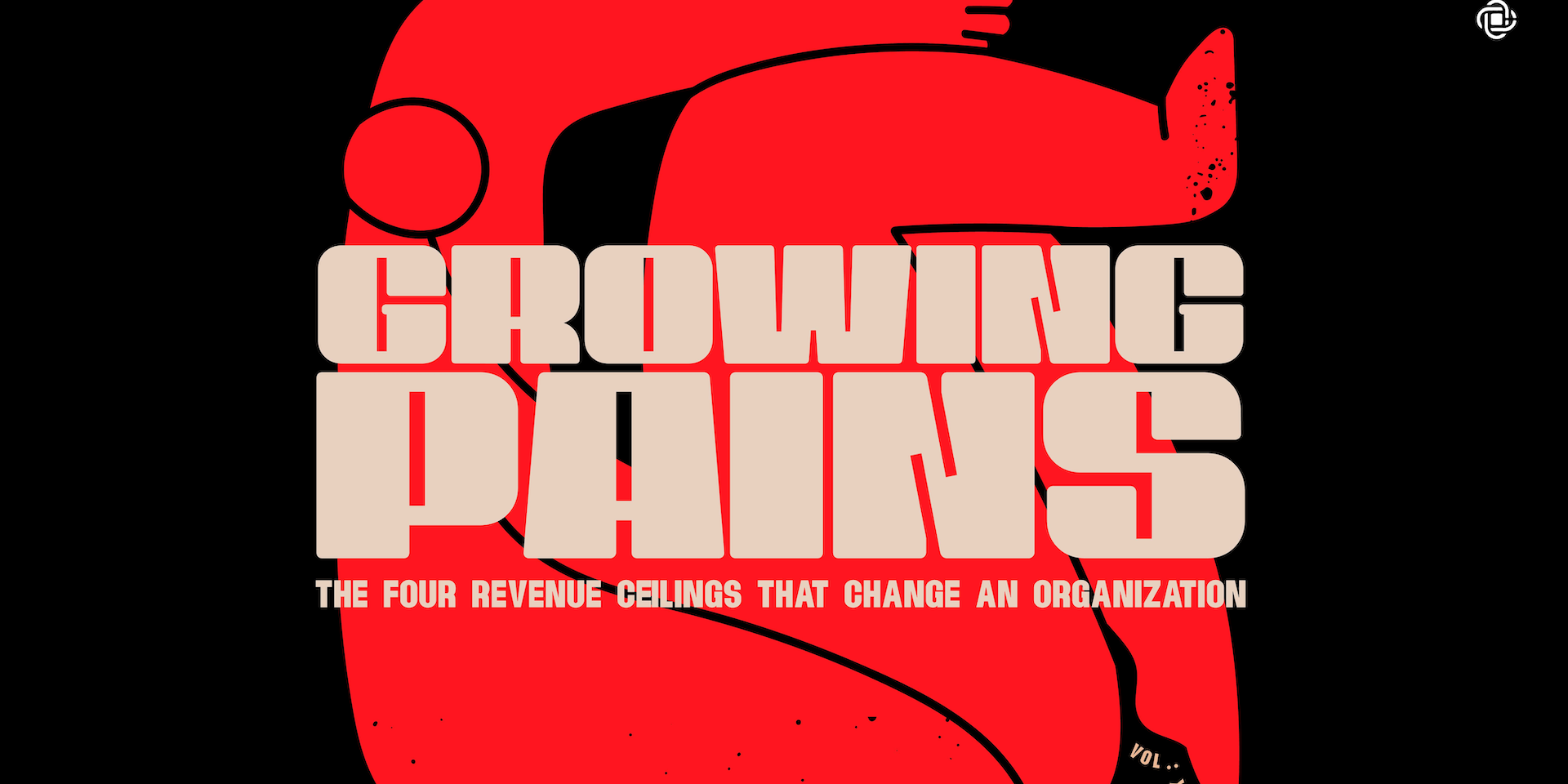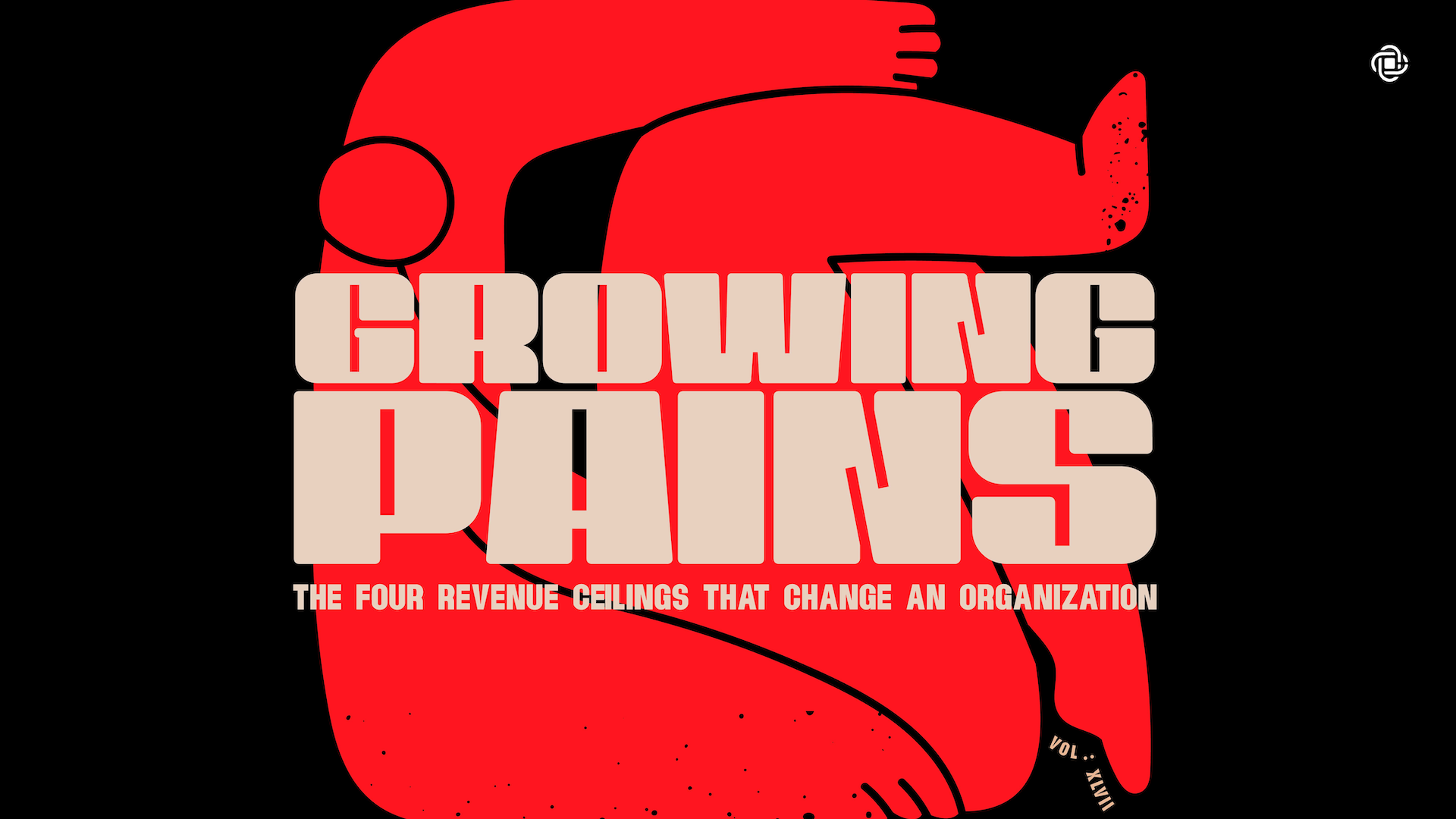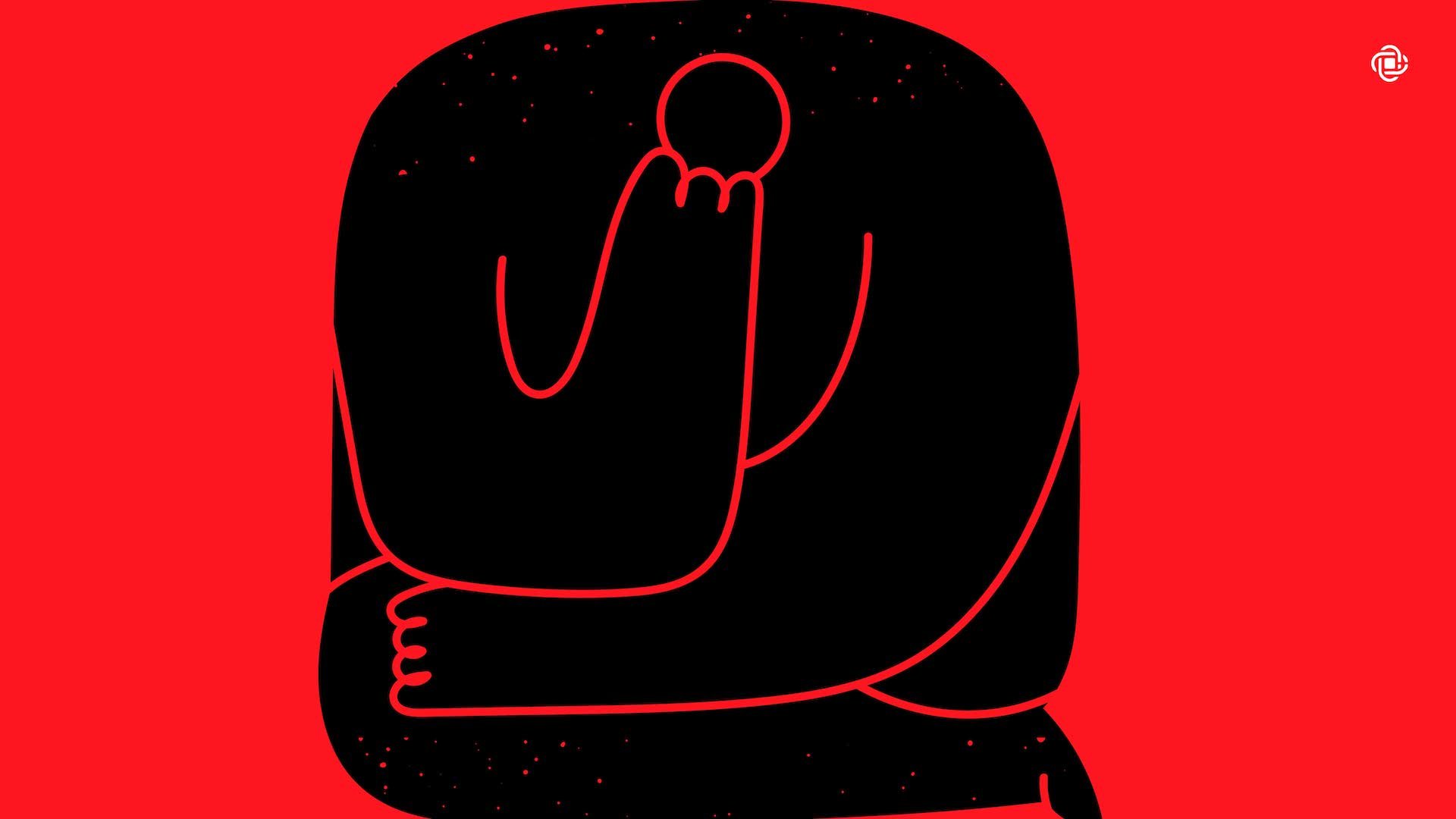The Four Revenue Ceilings and What They Mean for Marketing
When it comes to business, growing successfully means recognizing when you’ve run out of room in a current strategy or operation. We often look to revenue to indicate when we might be running up to one of those ceilings.
Recognizing these revenue ceilings and adjusting marketing, organizational structure, budgets, and more – at the right times – keeps the business trending up and through the ceiling. Sounds easy, right?
But the truth is growing is painful and knowing when and what to change can feel foggy and risky. Many leaders end up using the same strategies and budgets that worked millions of dollars ago, to try and lead organizations that are now larger and more complex than they once were. In turn, these leaders (and their brands) get stuck, hemmed in at the revenue ceilings by their own hesitancy, naivete, worry, and fear. As we often say…
The organization has grown bigger than your best thinking.
The result of not upscaling as revenue grows, is often incredibly limiting for the brand’s reach, further revenue, and future growth potential.
Maybe you’re a leader whose company is moving from small, to middle market. Or maybe you’ve already made the jump but your marketing or internal structures feel clunky. You know it could be better – but how?
We’re gonna take a look at the four revenue ceilings and give a quick suggestion of what needs to change at each one, to keep your brand growing and healthy.
The 4 Milestones
Just a word of encouragement before we dive into the list – the ceilings are not always exact measurements. If your revenue numbers are close to the ceilings, they should still be treated as ceilings, even if they’re a little past it or a little short.
1. $3 Million Ceiling: Getting to three million in revenue is an incredible achievement for any small business. But it’s the first real indication that your business is moving from the small, to the mid-markets. Potential is mounting, and to achieve it, you’ll need to make an important switch.
2. $10 Million Ceiling: The true numerical indication of a business leaving behind the word “small” and moving into the middle. Here, the biggest thing to watch out for is employee churn, which often tells the tale of whether the company is growing or stagnant.
3. $30 Million Ceiling: No longer just the sum of its parts, a $30 million revenue company is wholly in that coveted middle-market space. The middle market accounts for somewhere around $10 trillion in US revenue. That’s roughly 25% of all US revenue, and the middle market employs 1 in 4 American workers.
4. $100 Million Ceiling: There is plenty of debate about where the cutoff is for a middle market company. Some say $50 million, other say $1 billion. We think that’s a hell of a spread. What is true, is that a 100-million-dollar company is in a league of its own, and the only way to run one successfully, is to have completely upleveled all aspects of the business.
Changes At the Ceilings
Now, if you’re anywhere near that $3 million dollar mark or higher, there are specific changes that have to accompany any ascendency as you grow. One quick note before we get there:
The tactics that solve 100-million-dollar problems, rarely solve 3-million-dollar problems. And vice versa.
There are way too many bad LinkedIn posts where a CEO of a Fortune 500 company dispenses generalized advice that only works if you have the dedicated resources to pull it off. And too many small and medium sized business owners work themselves into a tizzy trying to actionize that advice, not realizing that they’re doomed because they simply don’t have the size, dollars, or infrastructure to back it up.
Not to mention, it’s just not needed…yet. Many small to medium-size business simply don’t require the complex inner-workings of a much larger business. There’s no need to jump the gun. Check yourself against the ceiling changes below and take a breath.
Everything in its due time.
1. Changes At $3 Million: The most significant change that has to happen for any business to move through and up the $3 million mark, is the focus of the brand has to shift from founder-driven to customer-centric. Founders, especially charismatic ones, often seem like such an easy way to keep growing the brand. And that’s true till the $3 million mark. After that point, the conversation has to move from the groundbreaking ideals of the founder, to the love of the brand’s customer. Without that shift, the brand loses relevance, floundering in a look-at-me conversation. What business owners must realize is that a conversation about themselves will only ever be so big. But a conversation about the customer, attracts more customers. And more customers means more revenue. Speaking of which…
2. Changes at $10 Million: Remember when we said that the best way to track whether a $10 million company is actually growing is employee churn? That’s because the thing that must change at this milestone is the company culture has to actually, for real this time, matter. What often happens to brands in this space is they seek to replicate what made them successful leading to this point, they just try to do it faster and more efficiently. The issue is that the brand is big enough now to have an identity of its own – bigger than whoever is in the room creatively. When the brand is bigger than everyone in the room, whoever is in the room matters deeply. And it matters that they be aligned on the goal, vision, message, and marketing of the brand – because that’s the brand’s future. It’s no longer tied to a founder or particular creative – it’s now tied to the customer, and how well it cares for them. And to achieve that, you need a team that loves the brand and loves the customer.
3. Changes at $30 Million: Very few brands, proportionally, make it to $30 million. That’s not always bad. There are lots of great brands and organizations out there that have no need to make it to this milestone. But for those with deep aspiration and a desire to continue growing, $30 million is when it’s time to celebrate what was successful. But not just any kind of celebration – a funeral. Why a funeral? Because from this point forward, whatever brought you to this point – strategy, marketing, etc – will only bring you to decline if you continue to use it the same way. One last point: if you’re trying to make it to $30 million, or past, it cannot (read: should not) be done without 100 employees. Why? The answer below.
4. Changes at $100 Million: Once at this ceiling, you’ve moved to enterprise level strategies and needs. It’s time to hire a CMO, whole teams, etc. The big shift, is that when there are 100 people in the room, the sense of belonging moves from the company, to one’s individual team. Marketing’s job is now to build a system that reinforces that shift. The whole brand becomes institutional in nature, each department well systematized to work in conjunction with the overall goals, messaging, marketing, and outcomes that the brand seeks.
What’s Up Next?
There is rarely a time when a brand’s revenue growth looks like a consistently graded onramp – just a straight line going up and to the right. And yet, what we’ve often seen, are CMOs and revenue chiefs draw such a line when asked what the next three year of revenue projections look like.
Do some brands experience cataclysmic, unstoppable growth? Of course. Are they in the majority? No.
What’s more common, is that brand leaders come to understand the revenue ceilings they have coming up, and lean into the changes that need to happen at said milestones. Then, as the customers and profits grow, so does the company.
If you’re getting ready to cross the threshold into that wonderfully promising middle market, or are already there and are at a loss for where to go next, then we’d love to hear from you.
Either way, there are next steps to be taken and milestones that bring change along with them. Our goal, is to help leaders make those changes so they can keep growing, along with the market, along with demand, and along with their brand.
Growing up doesn’t always have to be painful. If you know what’s coming and are prepared for it, getting bigger can be an exciting and rewarding proposition.
Click here to get started.




